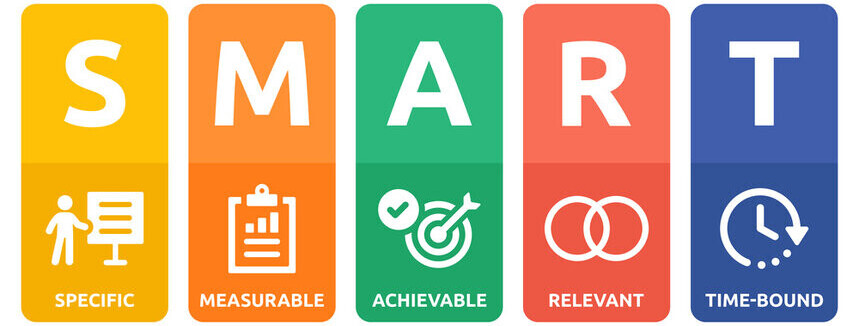
The Power of Goal Setting in Filmmaking
Goal setting is an indispensable tool for filmmakers, enabling them to navigate the multifaceted challenges of the industry. For creative professionals, especially those in filmmaking, clear objectives provide direction and purpose, ensuring that their artistic vision aligns with practical execution.
Why Goal Setting is Crucial for Creative Professionals
Filmmakers face unique hurdles: tight budgets, complex logistics, and ever-evolving audience preferences. By establishing clear goals, they can tackle these challenges head-on, fostering creativity within structured boundaries. Goals also serve as a motivational compass, helping filmmakers stay focused amidst the chaos of production.
The Impact of Clear Objectives on Film Projects
When filmmakers articulate their goals, it transforms the creative process. Clear objectives lead to efficient resource allocation, streamlined workflows, and cohesive storytelling. For instance, the success of the indie hit Whiplash stemmed from director Damien Chazelle’s goal to convey the intensity of ambition and perfectionism through a tightly controlled production timeline.
Effective Goal-Setting Strategies for Filmmakers
Achieving success in filmmaking requires more than ambition; it demands structured and thoughtful goal setting. Here are strategies filmmakers can use to turn their visions into reality:
SMART Goals
Crafting goals that are Specific, Measurable, Achievable, Relevant, and Time-bound (SMART) ensures clarity and accountability. For example, instead of aiming to “make a film,” a SMART goal might be: “Complete a 10-minute short film with a $10,000 budget by December 31.”
Visualization Techniques
Visualization helps filmmakers conceptualize their goals. Storyboarding, creating mood boards, or even imagining audience reactions to a finished film can bridge the gap between an abstract idea and tangible results.
Actionable Steps for Long-Term Goals
Breaking down ambitious projects into manageable tasks prevents overwhelm. A feature-length film can be segmented into pre-production, shooting, and post-production phases, each with its own mini-goals.
Flexibility and Adaptability
Filmmaking is unpredictable, requiring adaptability. Incorporating contingency plans into goal setting ensures progress even when unforeseen challenges arise.
Accountability Partners or Mentors
Sharing goals with trusted peers or mentors fosters accountability. Regular check-ins can help track progress and provide valuable feedback.

Clarifying the Filmmaker’s Mission
A filmmaker’s mission goes beyond technical skills; it’s about defining their purpose and passion within the industry.
Identifying Individual Aspirations
Understanding personal motivations—whether it’s storytelling, innovation, or advocacy—guides filmmakers in setting meaningful goals.
Fundamental Goals of Filmmakers
Every filmmaker aspires to create impactful stories, reach audiences, and achieve recognition. These overarching goals serve as the foundation for more specific objectives.
Differentiating Objectives by Role
The goals of a director differ from those of a producer or screenwriter. Directors may focus on visual storytelling, while producers prioritize budgets and logistics. Understanding these distinctions helps set tailored goals.
Balancing Personal and Professional Goals
Maintaining a balance between personal artistic vision and industry expectations is vital. Aligning these aspects ensures sustainability and fulfillment in a filmmaker’s career.
The Director’s Vision: Setting and Achieving Goals
Directors play a pivotal role in turning scripts into cinematic realities. Goal setting empowers them to bridge creative ambition with production realities.
Defining Success for a Director
For some directors, success means box office hits; for others, it’s critical acclaim or personal satisfaction. Defining this success shapes their goals.
Balancing Creative Vision and Production Goals
A director’s vision must coexist with practical production goals. Striking this balance ensures artistic integrity while meeting logistical demands.
Translating Scripts into Cinematic Reality
Directors use tools like storyboards, shot lists, and rehearsals to transform narratives into compelling visuals, aligning their goals with the final output.
Collaborative Goal Setting
Filmmaking is inherently collaborative. Directors work with producers, actors, and crew to establish shared goals, ensuring a unified vision.
Resisting Industry Pressures
Directors often face pressure to compromise their vision for commercial reasons. Staying committed to their goals requires resilience and strategic negotiation.
Strategies to Succeed in the Filmmaking World
Success in filmmaking is a combination of skill, strategy, and perseverance. Here are actionable strategies for thriving in this competitive industry:
Building Foundational Skills
A strong grasp of filmmaking fundamentals—camera techniques, editing, and storytelling—is essential for achieving goals.
Networking and Relationship Building
Connections within the industry open doors to opportunities. Attending film festivals, joining workshops, and collaborating with peers can accelerate career growth.
Aligning Projects with Market Demands
Understanding audience preferences and industry trends ensures that creative projects resonate and succeed commercially.
Leveraging Technology
Innovative tools like AI-driven editing software or virtual production techniques can streamline workflows and enhance creativity.
Maintaining Resilience
Filmmaking is rife with challenges, from funding issues to creative blocks. Resilience and a positive mindset are crucial for overcoming setbacks and achieving long-term goals.
Goal setting is the cornerstone of filmmaking success. By embracing structured strategies, clarifying their mission, and staying adaptable, filmmakers can turn their artistic dreams into cinematic realities.

